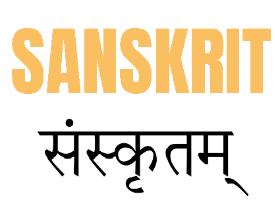





|
|
|
CONTACT 732-281-7122 / 732-423-8052 |
|
SANSKRIT |
|
Sanskrit is a classical language of India, and a liturgical language of Hinduism, Buddhism, and Jainism. A wide range of texts, including poetry, drama, scientific, technical, philosophical and religious texts exist in Sanskrit. Contemporary Hindu religious rituals use Sanskrit in hymns and mantras.
Sacred language Sanskrit is the primary sacred language of Hinduism and is also used in Buddhism and Jainism. It's the language of Hindu and Buddhist chants and hymns, and the philosophical language for Jainism, Buddhism, and Sikhism. Sanskrit is also essential for studying scriptures and Ayurveda, and knowledge of it is required for admission to the Mahashastra of Astrology.
Influence on other languages
Sanskrit has had a huge influence on other languages, including most modern Indian languages, which have been directly derived from or strongly influenced by it. Ancient Indian society
In ancient India, knowledge of Sanskrit was a marker of social class and educational attainment. Sanskrit was also a link language in ancient and medieval South Asia, and became a language of religion and high culture in Southeast Asia, East Asia, and Central Asia during the early medieval era.
History Sanskrit has a long and sacred history that can be traced back to the 2nd millennium BCE. It's believed to have been created by the god Brahma and passed down to Rishis (sages) living in celestial abodes. The written form of Sanskrit can be traced back to the Rig Veda, a collection of sacred hymns. The name sanskritam means "perfected" or "polished". In 500 BCE, the scholar Panini standardized the language by defining 3,959 rules of syntax, semantics, and morphology in his text ashtadhayi.
This course is designed to give students novice-mid to novice-high proficiency in Sanskrit according to the NCSSFL-ACTFL foreign language proficiency standards.
It introduces students to the language of Sanskrit, approaching it as a spoken as well as a written language.
The course will include a weekly spoken Sanskrit session followed by reading and writing.
Throughout this course,
students will be covering fundamental grammatical concepts in order to develop a working knowledge of the most common forms and constructions one is likely to encounter in readings of the language.
The course will mainly use handouts and external audio/video resources throughout the year
There will be frequent discussions about topics surrounding the language ofSanskrit, such as related linguistic, historical, and anthropological concerns.
By the end of this course, students will:
have a working knowledge of the scope of Sanskrit study as well as fundamental Sanskrit grammar and vocabulary be able to understand and speak basic sentences in Sanskrit be prepared to enter into intermediate-level Sanskrit study, including
Readings from narrative sources Kāvya (poetry and belles-lettres) Darśana (philosophy) |
|
|
